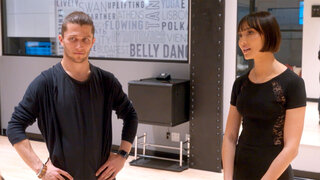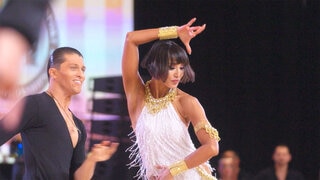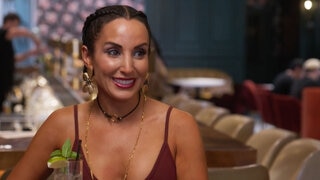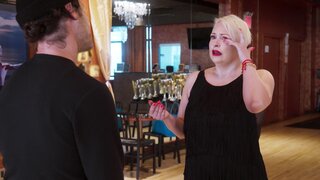
Create a free profile to get unlimited access to exclusive videos, sweepstakes, and more!
What Is the Pro/Am Ballroom Dance Competition Circuit Seen in Dancing Queens?
In Bravo's new series, there's more than meets the eye in the field of dance competition.
In Bravo's new show Dancing Queens, cast members are seen competing for trophies at various dancing events in Pro/Am competitions — which stands for Professional/Amateur. But what you might not know is that there are a lot of rules that define who counts as a professional and who counts as an amateur in this context, as well as how the competitions are structured and who runs them.
Read on for everything you need to know to understand the Pro/Am ballroom dancing circuit!
Who runs Pro/Am ballroom dancing competitions?
The National Dance Council of America (NDCA) is one of two official governing body for dance competitions in the United States and the one that sanctions the competitions in Dancing Queens.
Who competes in Pro/Am ballroom dancing competitions?

Pro/Am teams are made up of one professional (as defined by the NBCA) and one "amateur" student competitor, who cannot receive any payment for any form of dance lessons or performance. The student competitor pays the professional to partner with them, and may pay an additional coach to assist in their training.
On Dancing Queens, all the professionals are men and all the student competitors are women — but the Pro/Am rules do not define what gender either partner has to be. The rules instead state "A couple is defined in the traditional Ballroom Genre and in all dance genres included in championships, competitions, and events sanctioned by the National Dance Council of America, Inc. as a leader and follower without regard to the sex or gender of the dancer."
In ballroom dancing, the leader generally starts with their right hand on the lower back of the follower, and holds the follower's right hand in their left hand in order to guide the dance.
How does the Pro/Am ballroom dance competition circuit work?

As the Dancing Queens cast notes in Episode 1, "Every weekend is a different competition in a different city" — and the NDCA competition calendar proves that's generally true though, in actuality, there may often be multiple competitions around the country on many weekends.
Though the competitions must be sanctioned by the NDCA, they are mostly organized by outside organizations or individuals. Multi-day events are the only events allowed to host professional competitions or exhibitions alongside amateur, student, and Pro/Am competitions; single-day events can only host amateur, student, and Pro/Am competitions. (This, in effect, means that all Championships are multi-day competitions.)
The Championship designation is based on a complication point system calculated over three years, which includes: the TripAdvisor rating of the host hotel; the size of both the competition and practice floors; the number of competitors; the amount of the prize money; the number of events; how long the championship has been held; and how many NDCA rules the Championship has ever been caught breaking.
In other words, not all Championships are created equal.
What happens at a Pro/Am competition?
In general, Pro/Am competitions are organized by a combination of age and ability level.
Under NDCA rules, there are six age groups: A, for student competitors ages 19-35; B for student competitors ages 36-50; C, for student competitors ages 51-60; SR-1, for student competitors ages 61-70; SR-2 for student competitors ages 71-75; and SR-3 for student competitors ages 76 and above.
Student competitors' ability levels can be classified directly (Newcomers, Beginners, Intermediate, or Advanced) or in a color schema (Pre-Bronze, Bronze, Silver, Gold, Gold Star, or Supreme Gold, but Pro/Am competitors can only compete as Newcomers for one year after their first NDCA sanctioned event.
There are also four major styles of ballroom dance in the NDCA that are performed at sanctioned Pro/Am competitions.
The cast members of Dancing Queens compete on the show in the International Latin, which requires that they perform (in order) the cha cha, samba, rumba, paso doble, and jive. But there is also the International Ballroom, which involves the waltz, tango, Viennese waltz, slow foxtrot, and quickstep, in that order. Competitors may also enter the American Smooth competition (waltz, tango, foxtrot, and Viennese waltz) or the American Rhythm (cha cha, rumba, swing, bolero, and mambo).
Organizers may also choose to omit one dance from any five-dance event under certain circumstances, or offer certain dances as one-dance competitions in addition to the four main competitions.
If Pro/Am couples win at certain events, they either have to change the style of dance, their ability level, or their age bracket to compete in the same event the following year.
























